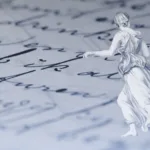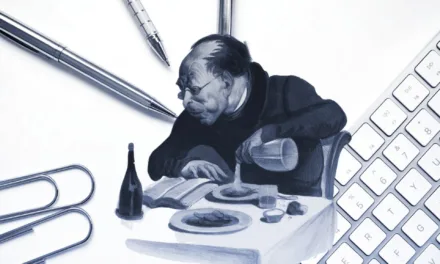
How to Write Thrilling Plot Twists

Mastering the art of the plot twist is one of the biggest challenges for a creative writer. A well-crafted twist not only keeps readers hooked, but it also adds depth to your narrative and can elevate your work from ordinary to unforgettable.
The key to a successful plot twist lies in striking a delicate balance—too predictable, and the magic is lost; too contrived, and the reader’s suspension of disbelief is broken. So what strategies can help you weave plot twists that are as organic as they are shocking, ensuring your readers remain engaged and, most importantly, surprised?
Plant the seeds with foreshadowing
At the heart of an impactful plot twist is laying the narrative groundwork. Foreshadowing subtly plants clues that will later take center stage in a pivotal reveal. The challenge—and the beauty—of this technique lies in its quiet obscurity, where details or characters that once seemed incidental suddenly reveal themselves to be important. When executed well, these hints not only pave the way for the twist but also enrich the reader’s experience when everything clicks into place!
As a writer, you plant seeds that may, at first glance, seem inconsequential or merely add to your story’s atmosphere—a forgotten photograph, an overheard conversation, a misplaced key. As the narrative journey progresses, however, these small details will become more significant. Hinting at these elements early requires a deft hand. It’s important they don’t overshadow the immediate story but remain in the background until the ultimate reveal.
Using symbols or thematic echoes is also a great way to deepen your narrative texture. These symbols could be something like a recurring storm that mirrors the protagonist’s inner turmoil or an innocent lullaby that later reveals a character’s sinister past. Symbols and motifs serve as harmonious threads that stitch the fabric of the story together and are perfect elements to use when foreshadowing for plot twists as they can evolve and develop as the narrative unfolds.

Create characters with depth
A plot twist becomes unforgettable when it challenges readers’ assumptions about a character’s true intentions. To do this, you need to create characters with depth.
To create a memorable character, you want to start with a strong outline by deciding what they want the most. Maybe it’s to find a lost love, to get rich, or to save the day. Whatever it is, this desire drives everything they do. But wanting something isn’t enough. A well written character will have internal struggles, like being too afraid to take a chance or wondering if they’re doing the right thing. This makes them feel real and can lead to the big surprises in your story when their actions play against their motivations.
Think about how your characters talk and act. The way they speak or the little things they do can hint at who they really are. Even a small action, like how they might avoid eye contact when they’re lying, can show a lot about them. Dropping hints in a character’s behaviour can set up for a plot twist in a way that is not immediately obvious, but will come together for a satisfying reveal later down the line.
As you build your characters with clear wants and genuine struggles, you set up the pins for a great plot twist. When a character shows their true self or does something unexpected, if you’ve laid the groundwork well, your readers will think back and realise the clues were there all along. That’s how depth in characters can make your plot twists feel both surprising and satisfying at the same time.
Lead readers astray through misdirection
Plot twists through misdirection are like a magician’s sleight of hand—you’re directing a reader’s attention away from what’s really happening. As a writer, this means creating diversions that mislead the readers just long enough to surprise them with a twist.
One way to do this is by using red herrings. These are false clues or distractions that seem important but actually lead the reader away from the truth. You might introduce a character who looks guilty, or set up a situation that seems like it’s leading to an obvious conclusion, only to reveal later that things aren’t as they seem.
Another tactic is to build up a secondary story or conflict. Readers get caught up in this issue, thinking it’s central to the story, only to find out that the main twist is happening elsewhere. This keeps them guessing, as they try to figure out which threads will lead to the heart of the plot and which are just side stories.
Then, there’s the drama. Big dramatic moments or emotional scenes capture the reader’s full attention. While they’re focused on one thing, they’re not paying attention to small details that might reveal the truth. This is where you can slip in clues without them noticing, because they’re too busy worrying about what’s happening in the moment.
In all of this, dialogue and description plays a crucial part. Characters might say things that can be interpreted in different ways, or you can describe scenes in a manner that seems to point in one direction when, in reality, the significance lies elsewhere. The key is subtlety—you want to mislead, not confuse.

Master the element of surprise
Mastering the element of surprise is crucial when it comes to delivering a powerful plot twist. It’s about the perfect timing; that electric moment that catches readers off guard and turns expectation on its head. To make sure your twist hits with full force, build a sense of anticipation. Let the story simmer with tension as you nudge readers to turn the page, eager to discover what happens next.
Consider your story’s rhythm. A twist dropped too soon might feel unearned, while one that comes too late can seem like an afterthought. It’s like a well-timed jump scare in a thriller movie—it needs to come at just the right moment to make you leap from your seat.
Think about the emotional journey you want your readers to take. The twist should be more than just a surprise; it should pack an emotional punch, shake up the story’s world, and possibly even change the reader’s perspective on everything they’ve read so far. When you play with the element of surprise like this, you’re not just delivering a twist; you’re creating a memorable moment that sticks with readers long after they turn the last page.
Common types of plot twists
While plot twists don’t have to follow a specific formula, here are some of the more common types of plot twists to help inspire you:
- The revelation: When a shocking truth is revealed, often about a character’s identity or past. This kind of twist makes readers see everything in a new light.
- The betrayal: When a trusted character turns out to be working against the protagonist. This betrayal pulls the rug out from under both the readers and the other characters.
- The false protagonist: Sometimes, the person you think is the main character is pushed aside, often through death or defeat, and a new protagonist emerges. This can shift the direction of the story dramatically.
- The unreliable narrator: The narrator is the readers’ eyes and ears in the story. But what if they’re lying or mistaken? Discovering that the story you’ve been told isn’t quite true is a classic twist.
- It was all a dream: Often polarising, this twist reveals that events in the story were just a dream or hallucination, casting doubt on what’s real and what’s not. It’s considered a cliché by many writers and readers, so write this twist with caution. It needs to really stand out and offer something new and different for readers to enjoy it.
- The time jump: The story suddenly leaps forward or backward in time, changing the landscape of the narrative and often the stakes for the characters involved.
- The double cross: In a double cross, a character can to betray the protagonist, only to later reveal that their “betrayal” was part of a larger plan. The opposite can also be true, in that a character who is on the protagonist’s side will reveal that they are actually in opposition, resulting in a betrayal.
- Mistaken identity: A case of mistaken identity leads characters and readers down a path of false assumptions until the true identity is revealed, often upending relationships and plotlines in the process.
- The reversal: A situation or outcome that seemed certain to unfold in one direction is flipped on its head, reversing roles, power dynamics, or resulting in an unexpected climax.
- An unexpected event: An event completely out of left field jolts the narrative, often changing the entire course of the story. This could be a natural disaster, a sudden death, or an improbable stroke of luck.
Here’s an exercise for you: To really master the art of writing plot twists, the best advice I can give is to read books or watch movies that include them. Pay attention and take notes on how the plot hints at the ultimate reveal, and what elements worked for you and what didn’t. Were you surprised by the reveal, or was it too obvious? If so, why? This will give you a good starting point to learn what makes a great plot twist.






























